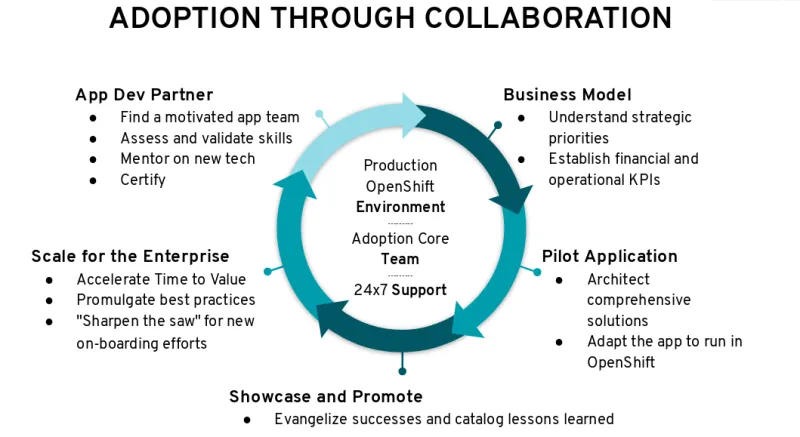The business wants better software, brought to market faster. Enterprise IT wants to manage cost and risk. The problem for large, complex organizations is that they need to accomplish these objectives and still maintain existing business operations. It is like changing the wheels of an F1 race car at full speed without a pit stop.
While some see cloud as a cure-all for the digital transformation goals set by CEOs, the reality of running large systems at scale in the cloud is rife with inconsistent interfaces, and the differing topologies of multiple cloud providers.
Cloud providers are painting themselves as the heroes that will enable digital transformation. Each one has a specific implementation of its infrastructure, and some are now offering on-premises datacenter hybrid-cloud appliances. The lack of homogeneity in their cloud technology will have a detrimental effect to those on the journey towards digital transformation, however. Developers and enterprise IT engineers have to learn the nuances of at least two clouds: public and private. Sometimes, they’re required to deal with even more. As a result, cost increases, complexity becomes common and developer productivity decreases.
Red Hat OpenShift is making it possible to achieve the digital transformation by smoothing over these difficult inconsistencies across public and private clouds. OpenShift gives developers and operators a consistent interface to their resources and deployment targets, be they public or private. Enterprise IT can define estate-wide policies once and provide developers with a consistent and highly automated experience -- within established “guard rails.”
The challenge with adopting Kubernetes is that the Enterprise IT and Application Development groups must rethink how they work together. Traditionally, IT and development did not require a high degree of collaboration. Enterprise IT focused on cost and operational efficiency, while Application Development focused on developer productivity. However, with container native infrastructure, such as OpenShift, both sides of the enterprise technology house are drawn together in a fast optimizing feedback loop of data and deployments. Therefore, a good adoption strategy cannot be built in isolation and requires a high degree of collaboration, lest all sides be buried in too much information generated by enabling a more regular and constant rate of change.
Joining Your Journey
Red Hat recognized this change management challenge, and has developed a Container Adoption Journey to help its customers maximize their chances of success.

The Container Adoption Journey is a structured approach with seven phases to guide customers to be successful in their adoption of OpenShift’s abstracted cloud interfaces. Below you will find the ingredients; a set of common change management practices that are implemented throughout the phases in an iterative fashion to promote continuous learning and experimentation.

Red Hat works with its customers to provide a path to successful adoption of container native infrastructure. We can help reduce the noise around change management efforts by bringing clarity to adoption and helping to push forward the overall digital transformation of your organization.
For the IT teams, operational cost efficiency can be tracked across resources, and across hosting platforms; be they cloud, colocation facilities, or on-site datacenters. Both IT and development should partner to implement a metrics-driven approach, with a management dashboard to measure the speed of delivery to production (Lead time), deployment frequency, mean time to recovery and change failure rates. With this information tracked across IT and development, cost optimization can finally extend beyond simple server hours and licensing fees, and into the deeper, more meaningful depths of the business: organizations can now measure software project estimation against performance results, or even individual developer ROI.
Facilitated by the Red Hat Container Adoption Journey, this model catalyzes a partnership. Enterprise IT is incentivized to help Application Development teams improve their productivity. And Application Development has visibility into their application delivery metrics, allowing them to make better operational decisions. As a result, Application Development can move faster over time, moving from quarterly deployments, to daily innovation. Since all application deliveries are done using automation, Enterprise IT gains operational efficiency, and can replicate working models as copy/paste software, rather rack/stack than hardware.
Starting Your Journey
Improving developer productivity and operational efficiency requires a common cloud interface in public cloud and on premises. Red Hat OpenShift, based on the open source Kubernetes Project, is well positioned to be that interface.
- Kubernetes is a widely supported open source community project. OpenShift from Red Hat is the first Kubernetes distribution designed from the ground up for cloud portability. It provides operational, developer and support experience consistency.
- The Container Adoption Journey helps companies become self sufficient in adopting the cloud.
- Red Hat strategic customers benefit from a mentorship relationship with our Cloud Deployment Managers (CDM). A CDM is an industry practitioner with deep cloud adoption experience.
- Red Hat also has a structured adoption program with time bound tangible deliverables to help customers accelerate cloud adoption.
As a technology partner Red Hat can provide the technology to help organizations achieve better Cost Efficiency and improved Developer Productivity.
저자 소개
Red Hatter since 2018, technology historian and founder of The Museum of Art and Digital Entertainment. Two decades of journalism mixed with technology expertise, storytelling and oodles of computing experience from inception to ewaste recycling. I have taught or had my work used in classes at USF, SFSU, AAU, UC Law Hastings and Harvard Law.
I have worked with the EFF, Stanford, MIT, and Archive.org to brief the US Copyright Office and change US copyright law. We won multiple exemptions to the DMCA, accepted and implemented by the Librarian of Congress. My writings have appeared in Wired, Bloomberg, Make Magazine, SD Times, The Austin American Statesman, The Atlanta Journal Constitution and many other outlets.
I have been written about by the Wall Street Journal, The Washington Post, Wired and The Atlantic. I have been called "The Gertrude Stein of Video Games," an honor I accept, as I live less than a mile from her childhood home in Oakland, CA. I was project lead on the first successful institutional preservation and rebooting of the first massively multiplayer game, Habitat, for the C64, from 1986: https://neohabitat.org . I've consulted and collaborated with the NY MOMA, the Oakland Museum of California, Cisco, Semtech, Twilio, Game Developers Conference, NGNX, the Anti-Defamation League, the Library of Congress and the Oakland Public Library System on projects, contracts, and exhibitions.
채널별 검색
오토메이션
기술, 팀, 인프라를 위한 IT 자동화 최신 동향
인공지능
고객이 어디서나 AI 워크로드를 실행할 수 있도록 지원하는 플랫폼 업데이트
오픈 하이브리드 클라우드
하이브리드 클라우드로 더욱 유연한 미래를 구축하는 방법을 알아보세요
보안
환경과 기술 전반에 걸쳐 리스크를 감소하는 방법에 대한 최신 정보
엣지 컴퓨팅
엣지에서의 운영을 단순화하는 플랫폼 업데이트
인프라
세계적으로 인정받은 기업용 Linux 플랫폼에 대한 최신 정보
애플리케이션
복잡한 애플리케이션에 대한 솔루션 더 보기
가상화
온프레미스와 클라우드 환경에서 워크로드를 유연하게 운영하기 위한 엔터프라이즈 가상화의 미래
